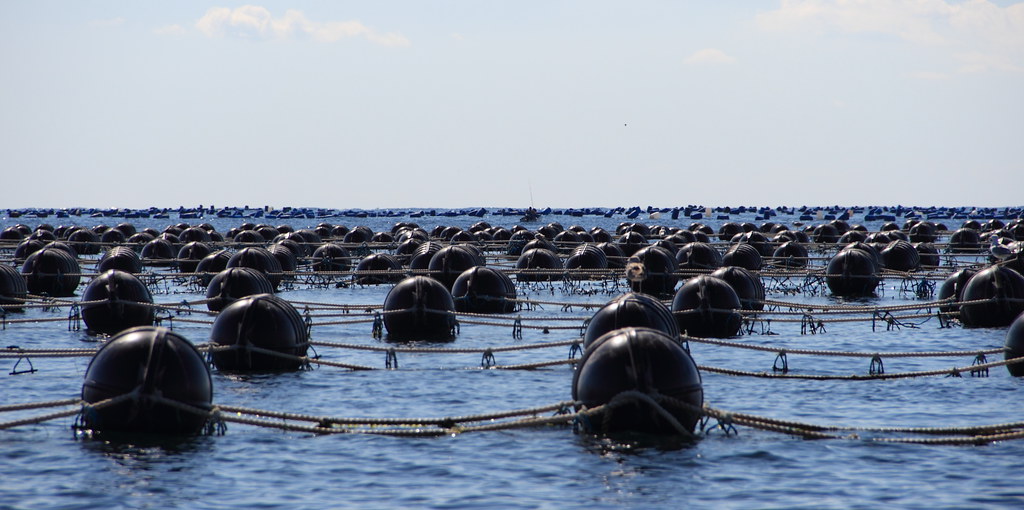Table of Contents
How To Set Up A Mussel Farm
Site selection
Open sea and estuarine areas free from strong wave action are suitable for farming. Clear seawater with rich plankton production (17-40µg chlorophyll/l,) is ideal for mussel culture. Moderate water current (0.17-0.25m/s at flood tide and 0.25- 0.35m/s at ebb tide) will bring the required planktonic food and will carry away the excessive build-up of pseudofaeces and silt in the culture area. The water should have a salinity of 27-35 ppt. and temperature of 26°C – 32° ? . Site should be free from domestic, industrial and sewage pollution.
Open sea farming
In open sea farming, the depth at the site should be above 5m without strong wave action, less turbulent and with high primary productivity. Long line and raft culture techniques are ideal for open sea farming. Mussels grown on long lines become smothered by naturally settling juvenile mussels and other fouling organisms.
Effective utilization of easily available materials for fabrication of long line and raft can be done. Disadvantages of this farming are the poaching and unpredicted climate changes. Protected bays are ideal for mussel farming.
Estuarine farming
Compared to open sea, estuarine ecosystems with less turbulent and shallow depth (<4m) are suitable for mussel farming. Culture of mussels on horizontal ropes results in high productivity due to the effective utilization of the primary productivity. Rack culture id ideal for estuarine conditions. Fluctuation is salinity
during monsoon season and pollution through domestic and industrial waste are the main constraints in estuarine mussel farming.

Methods of farming
Rack method
This method is suitable for estuaries and shallow bays. The racks are fabricated lacingamboo/casurinapolse vertically and horizontally tying and lashing with nylon/coir ropes. Bamboo or casurina poles are drier driven into the bottom and spaced at a distance of 102m. These stakes are connected horizontally with poles. The horizontal poles should be above the level of water at high tide and seeded ropes are suspended from the same.
Raft method
This method is ideal for open sea conditions. Square or rectangular rafts are fabricated with sturdy bamboo or casuarina poles. Buoyancy for the raft is provided by tying 5 barrels of 200 liter capacity one each at the four corners and one in the middle ( metal oil barrel painted with anticorrosive paint or synthetic material). Ideal size of the raft 5 X5 m. the raft are Positioned at suitable site in the sea using 50-100kg of iron, granite or concrete anchors. Three seeded rope can be suspended from one meter area of the raft.
Long –line method
This method is considered ideal in unprotected open sea conditions. The main line is synthetic rope of 16-20mm diameter. The long-line, which is supported by 200 litters barrels tied to it and spaced at 5m. The long-lines and barrels are anchored in position at both ends using concrete blocks and nylon ropes. Seeded ropes are suspended in the long-line.
Horizontal Culture
This method is ideal in shallow areas with a minimum level of water column. Seeded rope were suspended by tying upward by ropes to horizontal poles; but both the ends will be stretched and tied in vertical poles erected in opposite sides in the farm structure. In the estuaries of Malabar, most of the farmers are following this method.
Article Related Questions:
- Can you farm mussels at home?
- How does a mussel farm work?
- How long does a mussel take to grow?
- Are mussels farm raised?
- Why are mussels so cheap?
- Are farmed mussels bad for you?
